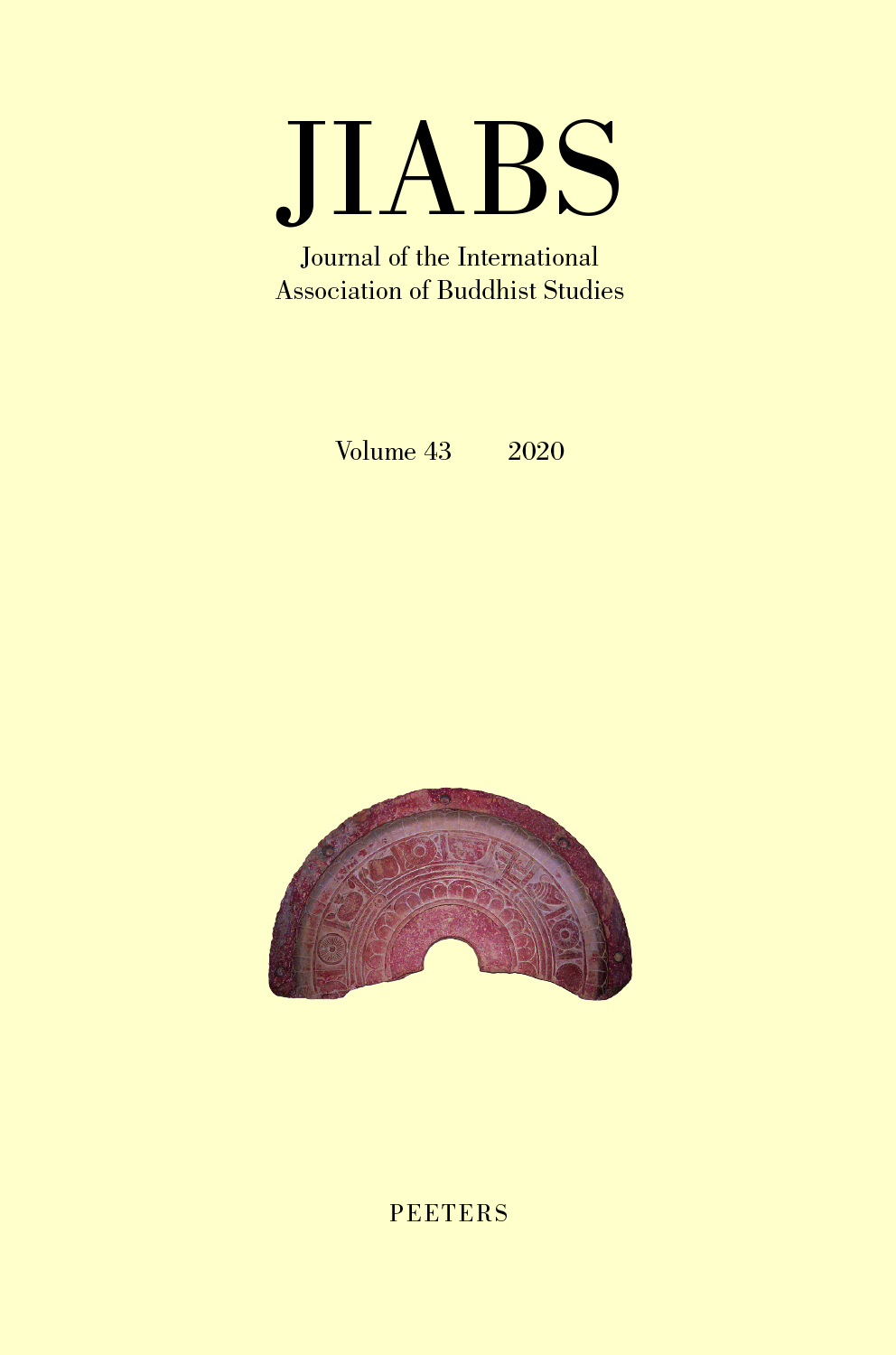 previous article in this issue previous article in this issue | next article in this issue  |

Preview first page |
Document Details : Title: Pure Mind in India Subtitle: Indian Background to Paramārtha's *Amalavijñāna Author(s): RADICH, Michael Journal: Journal of the International Association of Buddhist Studies Volume: 39 Date: 2016 Pages: 249-308 DOI: 10.2143/JIABS.39.0.3200527 Abstract : This paper examines various elements of Indian Buddhist thought that may be regarded as parts of the background to the concept of amoluoshi, or *amalavijñāna, as elaborated by Paramārtha (499-569). It is a companion study to two other articles in which I examined elements of Chinese Buddhist thought that can also be interpreted as parts of the background to the same concept. In conjunction, these studies are intended to form a case study in the supposed ‘sinification’ of Buddhist ideas. *Amalavijñāna has frequently been regarded as a classic instance of such ‘sinification.’ However, I hope to show here that the Indic background to the doctrine of *amalavijñāna is far richer than has been recognised in previous scholarship, and that the posit of ‘sinification’ is therefore not required to explain its emergence. At the same time, the companion studies are intended to show that the Chinese background could also adequately explain the emergence of the doctrine. This means that the doctrine of *amalavijñāna is overdetermined, and that it is unhelpful to ask whether this doctrine is exclusively or predominantly Indic, or Chinese, as if these are mutually exclusive alternatives. To the extent that we can generalise from this case, it suggests that classic theories of the so-called ‘sinification’ of Buddhist concepts have been predicated upon false assumptions, and in particular, that they have tended to overlook the degree to which the Indic and Chinese traditions shared a great deal of common ground. |
 |


